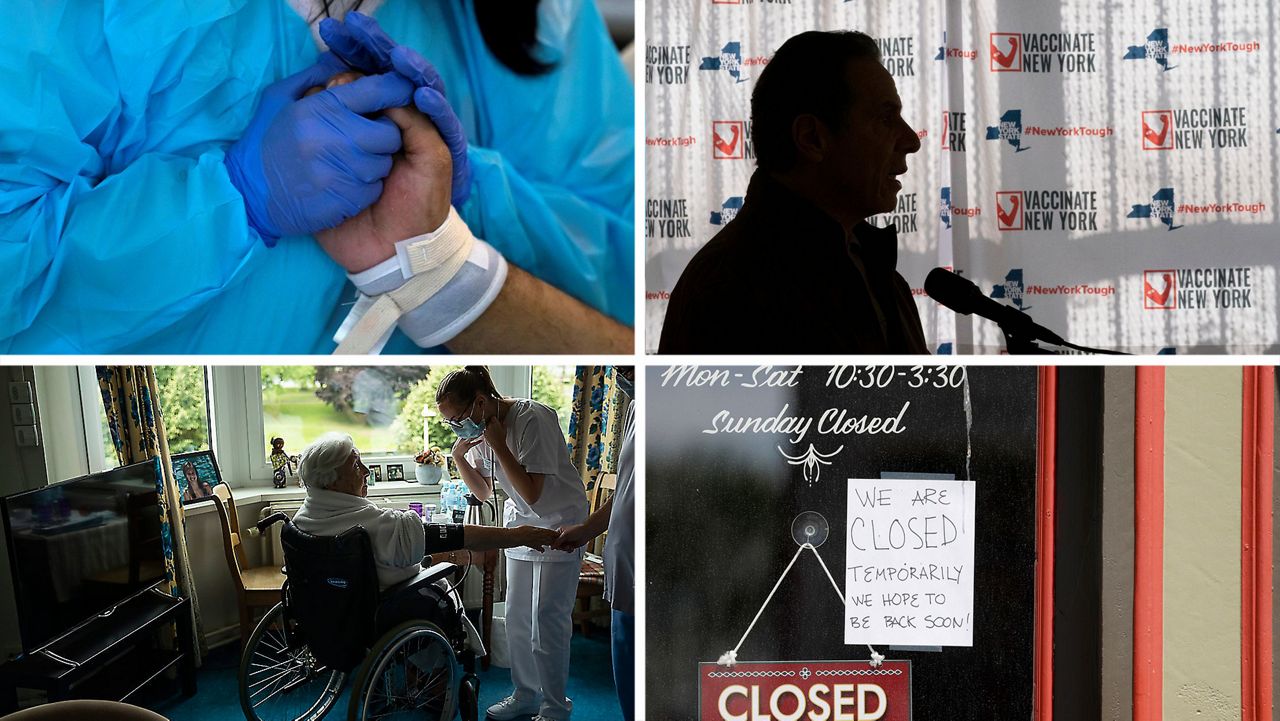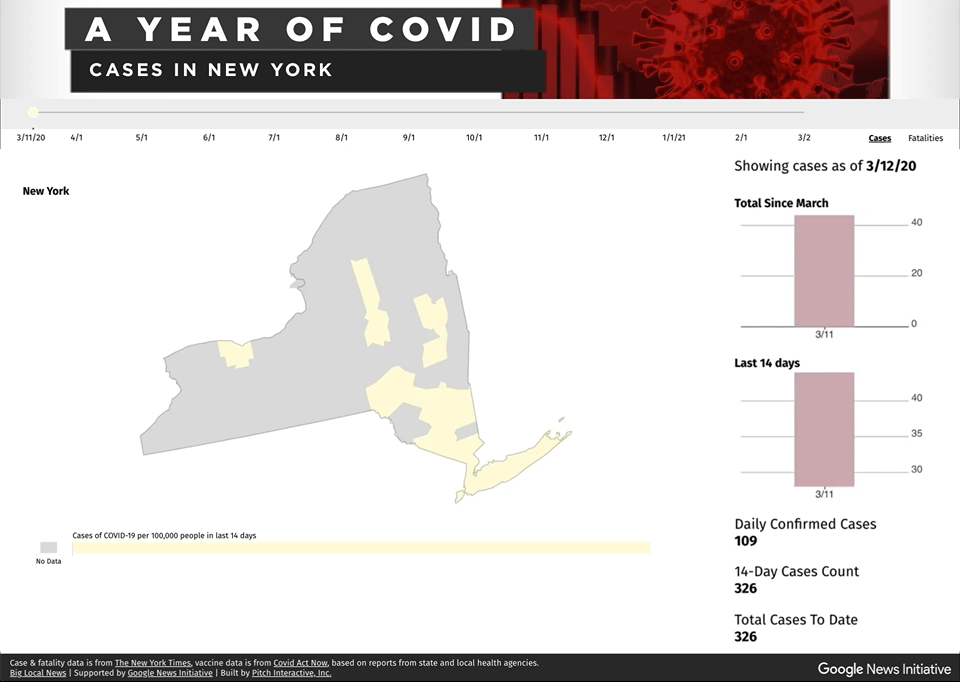Many New Yorkers probably don’t remember now what they were doing on February 29, 2020.
It was a Saturday, and the last weekend of complete normalcy as we knew it in the state. Bars and restaurants were open and crowded with people. St. Patrick’s Day parades were scheduled. Albany was preparing to host the first rounds of the NCAA Tournament. And to a lot of people, this thing called “coronavirus” or “COVID-19” seemed to live primarily on the opposite coast of the country, or in a different country altogether.
The very next day, Governor Andrew Cuomo announced the first case of COVID-19 in New York. That was one year ago.

Daily Life Drastically Changes
In the few weeks that followed March 1, the normalcy observed on February 29 became ancient history, as New York rapidly became the epicenter of the country’s largest health crisis in a century. College campuses emptied. Schools sent children home. Bars and restaurants went dark. Grocery store shelves were ransacked. In the height of March Madness, sports became nonexistent. Tens of thousands of people were suddenly thrown out of work. Our daily vocabulary became filled with brand new phrases that are now iconic, like “social distancing” and “flatten the curve.” And case numbers and the death toll began to surge. By the end of that month, it had surpassed 1,000 lives. Now, more than 1.6 million New Yorkers have been infected and the death toll is now past 38,000.
Unlike local or regional traumatic events we are more familiar with — like mass shootings or hurricanes — this was something that affected everyone everywhere in some fashion, in a way not seen since homefront rationing during World War II. Indeed, within a month of the state’s first reported case, each county in New York had cases of the virus, the brunt being in New York City and the immediate downstate area.
In mid-April, New York reached the apex. For nearly a week straight, between 700 and 800 people were dying every single day. A few days later, Governor Cuomo initiated the mandatory mask order in public places, which will no doubt remain in place for the foreseeable future.
New York Slowly Opens
A month later, on May 15, after weeks of protests demanding a full reopening of the state’s economy, the state began Phase One of returning to the workforce, a slow bi-weekly process that continued through the end of June, with some exceptions.
Throughout the summer, COVID-19 cases and deaths stayed extremely low while other parts of the country saw their worst spikes of the pandemic. In that sense, New York was able to look the most normal since the pandemic began.
A second surge in the late fall, spurred mostly by holiday gatherings, re-introduced some restrictions. The winter surge drove new daily case numbers higher than they were at any point in the spring. The most reported new cases in a single day was actually January 14, though the number of daily deaths were nowhere near what they were during the spring apex.
The winter spike also came with the introduction of COVID-19 vaccines that have been circulating throughout the state and country since then. About 14 percent of New Yorkers have received their first dose and about 8 percent have received both.
Looking to Year 2
As the virus enters its second year, the state’s priority remains vaccinating the public, followed by navigating the task of fully bringing back in-person instruction to schools, and an economic recovery that will most likely outlast the virus itself. The current unemployment rate remains above 8 percent and the state still faces a substantial financial hole dug by the pandemic. State budget talks in the coming weeks, — as well as what federal assistance comes out of Washington — will help determine what the state’s fiscal health will be in the months and years ahead.
The state now also has a sort of political crisis on its hands, as scrutiny from members of the legislature and federal government over the state’s handling of the coronavirus in nursing homes will likely continue. Talks of limiting Governor Cuomo’s emergency powers have already been floated, but nothing concrete has moved through Albany at this time.
No one knew how long this would last when it started, and no one can be sure how much longer it will now. Some projections about the pandemic have been on the good and bad side of being wrong. A model projection released by the Bill Gates Foundation in early April estimated 16,000 New Yorkers could lose their lives before this is all over. The death toll is more than double that and it’s far from over. On the plus side, hospitals across the state were not completely overwhelmed past capacity, which was a major concern at the outset as hospitalizations swelled.
There will be many challenges for New York in year two of COVID-19 and on the other side of the virus, when that time comes.




